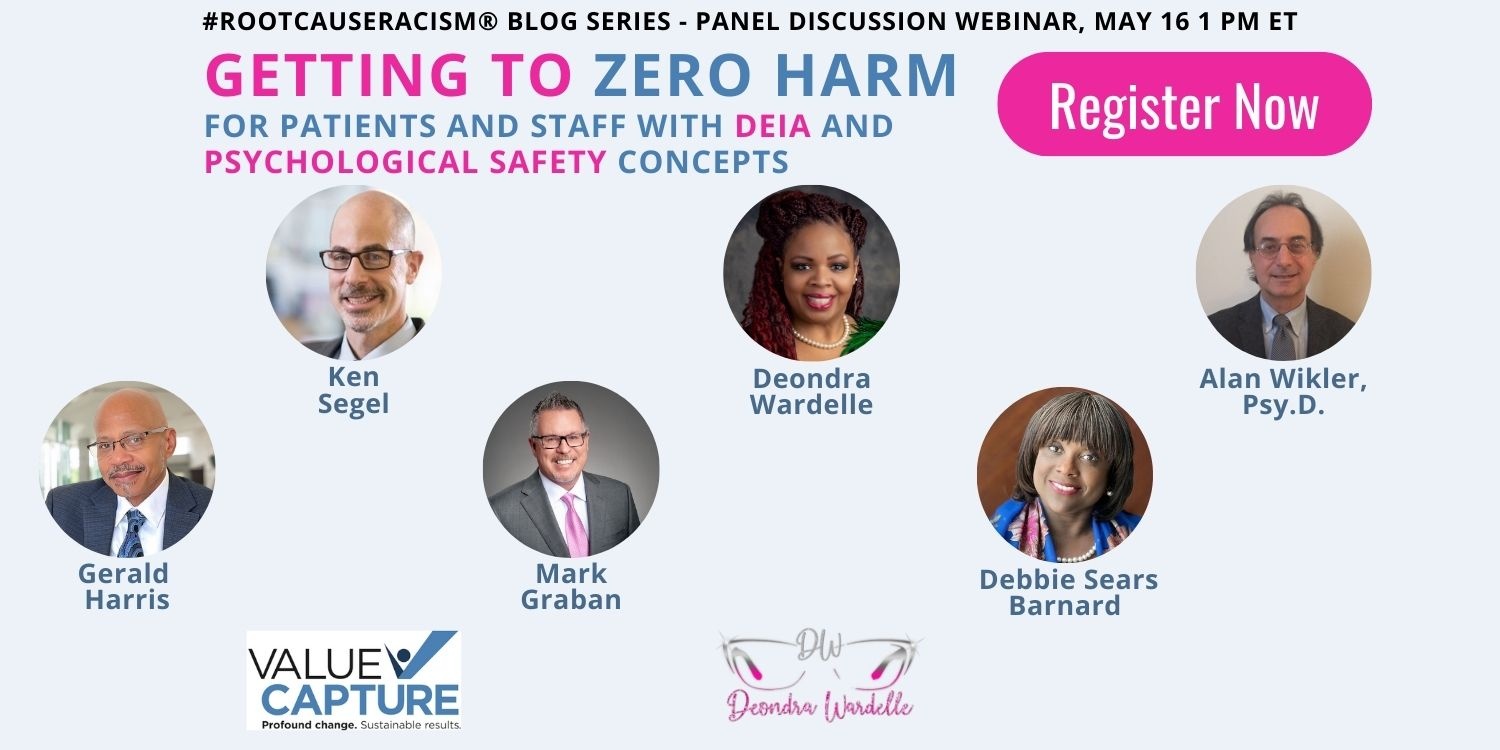This is the third post in the #RootCauseRacism series.
I am excited to share with you the power of developing healthcare improvement strategies based on the “4 Stages of Psychological Safety” and a commitment to operationalizing Diversity, Equity, Inclusion, and Accessibility (DEIA) to improve staff engagement and patient safety among underrepresented groups.
I invite you to join me in exploring the intersection between Stage 1 (Inclusion Safety) and the Lean/Toyota principle of "respect for people" or, as the Shingo Institute calls it, "respect every individual."
You may ask, what are the four stages of psychological safety? According to Dr. Timothy Clark, psychological safety is a social condition in which human beings feel included, safe to learn, safe to contribute, and safe to challenge the status quo without fear of being embarrassed, marginalized, or punished in some way. These stages are critical for creating a culture of safety and continuous improvement in healthcare.
The Lean/Toyota principle of "respect for people" or "respect every individual" is a foundational element of Lean methodology, which aims to reduce waste and improve efficiency in healthcare processes. This principle recognizes the unique contributions and perspectives of every team member and empowers them to make meaningful improvements in their work.
But we can't stop there. We must also operationalize DEIA to improve staff engagement and patient safety among underrepresented groups. This means recognizing and addressing the systemic barriers that prevent certain groups from fully participating in healthcare improvement efforts and taking proactive steps to create a more inclusive and equitable workplace.
To further expound on the topic of creating a culture of safety and inclusion in healthcare, let's explore some practical steps that can be taken to operationalize the principles of psychological safety, respect for people, and DEIA.
1) Build a foundation of trust and respect: Leaders must create a safe and supportive environment where everyone feels respected and valued, and where they can openly share their thoughts and ideas without fear of judgment or retaliation. This can be achieved through regular communication, active listening, and recognition of team members' contributions.
2) Foster a culture of continuous improvement: Healthcare organizations must embrace a culture of continuous improvement where team members are encouraged to experiment, learn from their mistakes, and implement changes that improve safety and the quality of care. Leaders must provide resources and support to enable staff to develop their skills and knowledge and be involved in improvement projects that align with their interests and strengths.
3) Address implicit biases: Implicit biases can impact decision-making and contribute to disparities in healthcare. Organizations should provide training and education to help staff recognize their biases and develop strategies to mitigate them. This can include unconscious bias training, diversity and inclusion training, and cultural competency training.
4) Engage underrepresented groups: To improve patient safety among underrepresented groups, healthcare organizations must engage patients and families from diverse backgrounds in improvement initiatives. This can include involving them in the design and testing of interventions, soliciting their feedback, and providing culturally appropriate care.
5) Measure progress: To ensure that efforts to improve safety and inclusion are effective, healthcare organizations must measure progress and track outcomes. This can include monitoring employee engagement and satisfaction, patient satisfaction, and clinical outcomes.
In summary, creating a culture of safety and inclusion in healthcare requires a multifaceted approach that incorporates principles of psychological safety, respect for people, and DEIA.
By building a foundation of trust and respect, fostering a culture of continuous improvement, addressing implicit biases, engaging underrepresented groups, and measuring progress, healthcare organizations can create a workplace where everyone feels valued, supported, and empowered to drive positive change.
Let's work together to create a culture of safety and continuous improvement that supports everyone in achieving their goals and driving positive outcomes for our patients and communities.
I invite you to join the conversation and be a part of creating positive change in healthcare.
How do you see the principles of psychological safety and "respect for people" intersecting in healthcare? In what ways have you seen the power of inclusion in the workplace? Share your thoughts and experiences with us in the comments below.

Written by Gerald Harris
Gerald has over 25 years of leadership experience in the delivery of successful large-scale lean transformations across a broad range of industries and companies. His industry segment experience includes machining, electronics, automotive interior trim, vehicle assembly, anti-lock braking systems, exhaust and ride control systems, and, for the past 14 years, healthcare.


Submit a comment